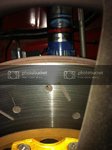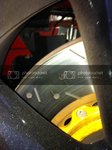2012YellowBoss said:Good to know, I never ran the DTC 70's just guessing there. The 01 is harder on the rotors then the new 08, so that is saying a lot. Are you still running the PFC 01 up front?
Yes, I am sticking with the 01/97 combo for the forseeable future.


















